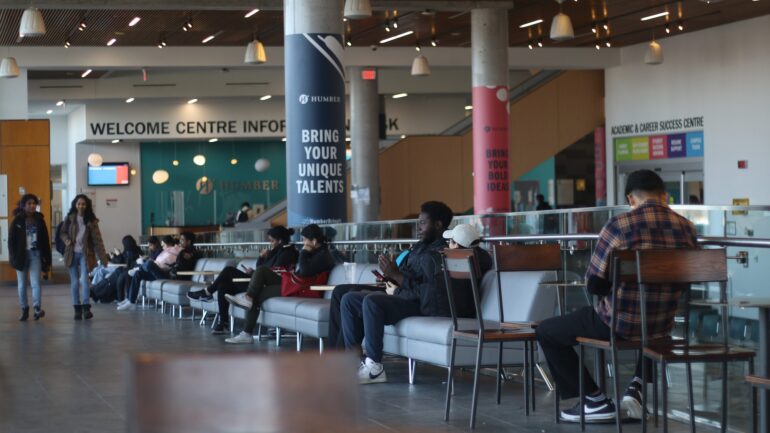Ontario government has unveiled a transformative funding plan totalling nearly $1.3 billion aimed at stabilizing colleges and universities across the province.
The announcement made by Jill Dunlop, minister of colleges and universities, outlines a suite of measures aimed at stabilizing post-secondary institutions while keeping tuition fees frozen to alleviate financial burdens on students and parents.
This move comes as a relief to students and families, who the government said saved about $1,600 per year on average for university and $350 per year on average for college since the freeze was first introduced.
Nigmendra Narain, president of the Ontario Confederation of University Faculty Associations (OCUFA), said in an interview with Humber News that students need much more than what schools are supplying.
“We need sustained, long-term increases in per-student funding in Ontario, not short-term injections that don’t solve the problem of underfunding, much less ensure the sustainability and growth of our public universities,” Narain said.
“Faculty, students, administrators, and staff groups are all telling the government the same thing: We need more funding for universities and we need it right now,” he said.

The admissions page for the Humber North campus. The provincial government is providing $1.3 billion to stabilize funding, an amount critics say falls short in meeting post-secondary needs. Photo credit: Niharika Nayak
Narain said he expected the government to listen to real experts and academics who research, teach and learn on the campuses every day. It is a way to develop a path forward to implement sustainable solutions.
“The government’s chronic underfunding creates scarcity conditions on campus which negatively affect student learning and faculty working conditions,” he said.
“Per-student funding for universities goes towards things like hiring and retaining full-time professors, staffing libraries, and providing student services, but when the government doesn’t provide enough funding for these vital elements, everyone on campus feels their effects,” Narain said.
The Ontario government said it intends to support colleges in offering applied master’s degrees in key areas such as advanced manufacturing, AI, and animation.
Sankarnath Suresh, a student specializing in Mobile Application Development at George Brown College, said he looked forward to these changes.
“AI helps me to code faster. I can fix errors faster with it and focus on implementing my idea instead of grappling with syntax. I feel AI will reduce plagiarism and improve learning,” Sankarnath said.
Liz Tuomi, the media secretary and senior communications advisor for Jill Dunlop said that allowing publicly assisted colleges to offer master’s degrees in applied areas has the potential to expand credentials in specialized programs such as cybersecurity and robotics.
She said this will provide pathways for college graduates pursuing graduate studies in the college system and create opportunities for applied research and commercialization.
“As these programs get introduced, we look forward to seeing our postsecondary partners promote them to prospective students across Ontario,” Tuomi said.
This strategic move aligns graduate education with industry demands, providing students with the skills and expertise needed to excel in the workforce, she said.
Tuomi said the implementation of applied master’s degrees in colleges reflects the Ontario government’s strategy to cultivate a proficient workforce and endorse ongoing educational opportunities.
“This initiative supports our goal of creating responsive master’s level programming that is relevant to the province’s needs, advancing new learner pathways that benefit students, employers, and the economy,” Tuomi said.

Ontario's colleges and universities receive a boost with nearly $1.3 billion in new funding, as the government maintains a freeze on tuition fees. Photo credit: Niharika Nayak
Dunlop said in a media release the province is set to introduce legislation that sheds light on ancillary fees and other student costs. This is to ensure that students and parents have a clearer understanding of financial costs.
“We’re taking action to make fees more transparent. We’re supporting student mental health, fostering safer campuses and preparing students for rewarding careers,” Dunlop said.
Peggy Sattler, NDP MPP for London West and the party’s critic for Colleges and Universities, said provincial funding for postsecondary institutions hasn’t kept up over the years.
“Ford has been fully aware of how decades of chronic underfunding by Liberal and Conservative governments and five years of Ford cuts, have pushed our postsecondary institutions to the brink,” she said.
“Instead of taking serious action, Ford has encouraged unrestrained international student recruitment, enabled bad actors, rewarded PC party donors, and left everyone else out in the cold. We should never have gotten to this level of crisis in our colleges and university sector. We need serious solutions to get us out,” Sattler said.
Ontario is extending its tuition fee freeze for publicly assisted colleges and universities for at least three more years.

